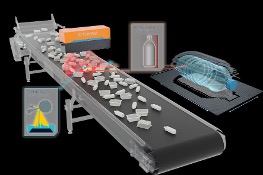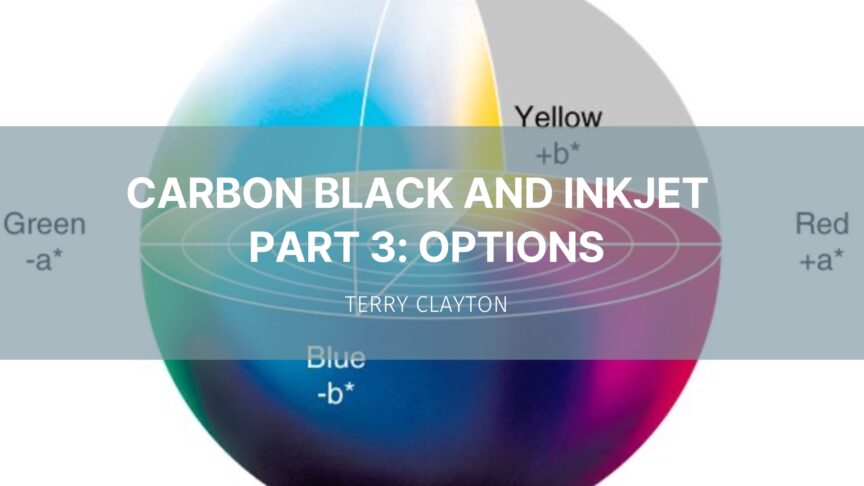Evaluating Potential Carbon Black Substitutes
In the first two articles in this series we covered what carbon black is, how it is produced and its regulatory status. Despite confusion on the toxicity of carbon black, and a pause in deliberations on related regulation, we will go ahead and take a look at the potential pigment substitutes the industry could draw on if the New York legislation banning carbon black were to move forward. These include combining pigments with opposing colors, bio-based pigment, and a few less viable alternatives.
Not Just Any Black Will Do
Ink formulators are not just looking for black; they seek the measurably blackest black possible. A high performance carbon black pigment allows an ink formulator to create inks with a jet black color. The contrast created by dense black pigments are particularly important for text legibility in the book trade and also indespensible for photo image reproduction and high quality graphic arts printing.
Black is not subjective. Ink color is measured and described using the CIELAB (L*a*b*) color space system with measures of L* (white), Green/Red (a*) and Blue/Yellow (b*). L* is measured from zero to 100 while a* and b* can have positive or negative values as shown in Figure 1 below.
The darkest black would have an L* of zero. Respectively the brightest white would be represented as an L* of 100. A black ink made with carbon black might have and L* of 6, a* of -10, and b* of -5. Not quite an L* of zero but very close and suitable for most purposes in the production printing industry.

Figure 1. L*a*b* Color Space. Nazdar Ink Technologies
Using Mixed Pigments to Create Black Color
An alternative strategy to produce a black ink is to combine colors to create the target L*a*b* values for a black. This is done by mixing opposite colors on the color wheel. Examples of two color combinations to create black include blue and brown, yellow and purple, and red and green. It is also possible to create a black color by mixing pigments of three colors, for example cyan, magenta, and yellow. (See Figure 2).

Figure 2. The Color Wheel with primary and complementary colors. Bass Art Museum.
In theory, a combination of 100% cyan, magenta, and yellow inks, if all inks are perfectly formulated should absorb the entire visible spectrum of light and produce a perfect black. In practice, each of the individual colors is less than perfect and in combination produce black inks which are weaker in color strength and generally inferior to those formulated with carbon black.
To make matters worse, the pigments used to formulate these colors are significantly more expensive than black. The price difference is great enough that Under Color Removal (UCR) exists as a process to ensure that cyan, magenta, and yellow are not used unless needed.
A transition to a mixed pigment approach to black would dramatically increase costs in a market that is already highly cost sensitive.
Emerging Biobased Formulation of Carbon Black
Research is underway to produce a black pigment from renewable resources such as vegetable oils and biomass as an alternative to using petroleum to produce carbon black. Living Ink, a Colorado based company is taking the lead on this research and development effort.
Living Ink has developed a process for producing carbon black pigment from algae. Their pigment and inks have a much lower carbon footprint compared to standard black inks. The algae used in the process pull carbon dioxide from the air to produce the biomass feedstock for pigment production. The structure, morphology, and particles size distribution of their carbon black pigment is unique from petroleum based carbon black.
Despite these benefits, the biomass-based pigments are chemically similar to petroleum-based versions and would likely also be banned by the proposed New York state legislation as it is currently written.
Other Options for Black Colorants
There are other colorant options that will produce black, but they also offer challenges.
Iron oxide, pigment black 11, is currently used as a pigment to create a black ink. Its primary application is security inks and magnetic ink recognition inks (MICR). However, iron oxide is a highly abrasive pigment which can accellerate equipment wear and tear. It also suffers heat stability issues which cause an irreversible shift in color from black to reddish brown due to oxidation of the iron content.
Another option, copper chromite black spinel, may be used as a substitute for carbon black. This inorganic pigment, known in the trade as pigment black 28, is composed from copper and chromium giving it a higher specific gravity. Pigments with higher specific gravity are more difficult to create stable pigment dispersions and inks from. Like using mixed color pigments to create a black, both iron oxide and copper chromite black spinel are more expensive than carbon black pigment (although less than cyan, magenta, or yellow pigments.) In addition to a price premium on components, an inkjet ink made from this pigment would require agitation onboard the printer similar to white inkjet inks made with titanium dioxide adding printer design complexity and potentially reduced shelf-life of the ink.
Sorting Technology & Carbon Black
In addition to concerns about toxicity, a second driver for a potenial carbon black ban is its the interference with optical sorters in recycling processes. Carbon black pigment in printed materials and other recyclable materials makes identification using near infra-red (NIR) technology more difficult because it absorbs light instead of reflecting it. This can result in materials being incinerated or landfilled despite being recyclable. It would be interesting to see how significantly biobased forms of carbon black may interfere with the near infrared (NIR) sorting technologies used in recycling streams and if any benefit exists. However, there are alternative technologies to NIR that can work with carbon black more effectively.
New technologies that work in the middle wavelength infrared (MWIR) spectrum can detect plastics with carbon black as well as other components such as surfactants, plasticizers, and fillers. Raman Spectroscopy is a more mature technology based on high-intensity lasers to identify materials, offering a solution to NIR limitations. Steinert, a German company, has developed a sorting sensor unit, Unisort Blackeye, which can identify black synthetic materials as well as the polymer type. Other potential sorting solutions include Deep Laiser, Specim FX50, Unisensor Powersort, and Hamos EKS to name a few.
These technologies leverage a range of analysis and detection technologies including near infrared (NIR), laser line scanning optical recognition, middle wavelength infrared (MWIR), UV-VIS, fluorescence, and even electrostatic finger printing.

Figure 3. Deep Laiser. www.TOMRA.com
Legislative Update
Extended Producer Responsibility (EPR) Legislation related to carbon black did not pass in the New York State legislature for 2024. The bill had significant opposition from printing and consumer goods companies. Arguments against the EPR include a lack of understanding related to carbon black safety, devastating impacts to business, and technical advancements in recycling and sorting technologies which have not been considered. It is likely we will see a new version of the EPR legislation in 2025.

